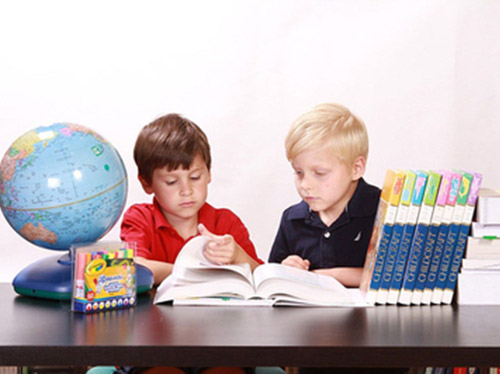
Dr. Maria Montessori studied the extraordinary way young learners acquire knowledge and the notions of their evolving minds. Montessori, realizing the shapeable nature of children’s minds, suggested that instructors prepare a tailored environment. Then, placing the child within it, she found it gave them the freedom to live in it, absorbing what they discover there. These well-maintained classrooms, or the prepared environments, became a staple in the Montessori method.
The vision of the prepared environment has an elevated focus on order, directly relating to the remarkable way in which young children inherently understand and retain knowledge. The impact of the prepared environment in the Montessori preschool classroom allows young learners to build the base of a life-long love of learning and take pride in their findings. The ambition of the prepared environment is to render the growing child independent of their parents and other adults. It is a place where preschoolers can do things for themselves without direct help from adults. In doing so, the preschooler becomes conscious of their power.
So, what is a prepared environment exactly? A prepared environment is a classroom atmosphere that emphasizes:
Order
The systems and order of the prepared environment play an influential role in preschoolers’ learning and growth. A disorganized classroom often harms the development of reasoning skills and confidence because opportunities to create new experiences are fragmented and fewer in number.
The Montessori educator is well-versed in arranging the classroom in an optimized, practical, and logical way. The room is not only spatially arranged but also ordered based on where an item is. Without clutter, each object has a purpose and designated location.
As preschoolers fall in rhythm with the structure of the classroom around them, they can begin to understand the systematic methods of their world, as well.
Beauty
Prepared environments are designed to reflect harmony and calmness, striving to be tidy and well-kept. Natural lighting and oxygen-producing plants are a primary aspect of many prepared environments. Sunny, warm lighting, calming pastel colors, and soft textiles are used in Montessori classrooms, creating a feeling of being in a friendly and comforting environment.
Dr. Montessori had a profound admiration for nature. Her studies suggested that Montessori educators take their students outdoors and believed that we should use the organic to inspire children. Because of this, natural materials furnish the prepared environment.
Whenever possible, Montessori preschool classrooms opt for wood, reeds, bamboo, metal, cotton, and glass instead of synthetics or plastics. The emphasis on beauty and natural elements helps create a sense of peace, structure, and comfort for preschooler learners.
Social Environment
The prepared environment is also a social setting, allowing children the freedom to work together through creation, learning, and play with others. This growth through social interaction is encouraged further by Montessori’s multi-age classrooms, where older learners model more developed behaviors for their younger peers.
As children grow, they become more socially conscious, and their interactions become more meaningful. Prepared environments in Montessori classrooms foster a sense of compassion and empathy for others, thus causing children to be more socially aware.
By working and playing with others their age in a prepared environment, Montessori students are encouraged to develop kindness and understanding.
Autonomy
The prepared environment allows for freedom of movement, freedom of choice during independent work blocks, and to interact socially or take time to yourself. Montessori believed that a child must be free to explore and follow his natural impulses, thus developing his potential and increasing their world knowledge.
From the earliest levels of Montessori education, students are encouraged to develop agency and seek out opportunities and resources. Freedom in the prepared environment involves freedom of movement, exploration, and interaction.
The best way to learn more about the prepared environment is by visiting one and asking a Montessori educator about their strategies and approaches. Reach out to us today to schedule a tour at one of our school locations to see a prepared environment for yourself and decide if it is the best fit for your student!
The Montessori Charter School of Flagstaff was the first school in Arizona to have its application for a charter approved by the Arizona State Board for Charter Schools. We offer an academic program that identifies and encourages each child’s individual social and emotional development. Visit our blog to learn more about our method or reach out today to begin your journey with The Montessori Charter School of Flagstaff.
